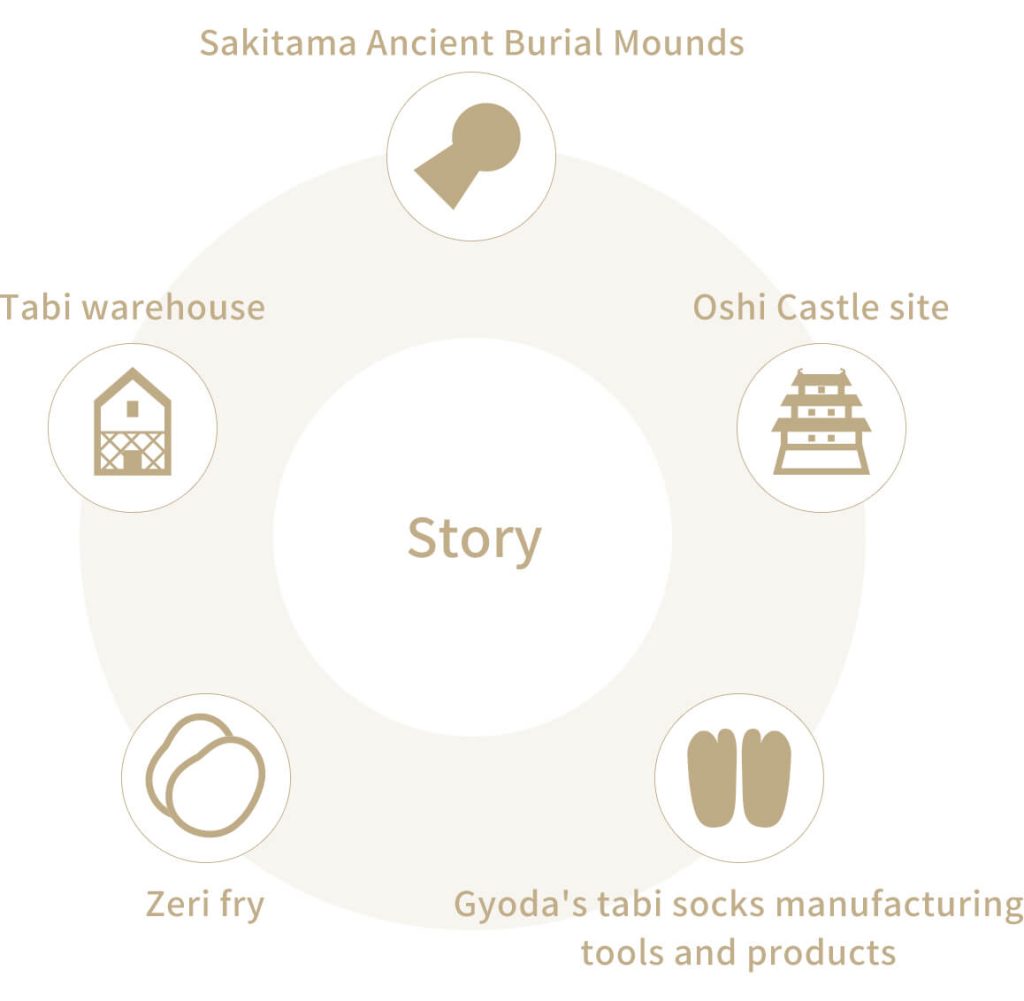Outline of Japan Heritage
Japan Heritage is a new program for cultural properties established by the Agency for Cultural Affairs in 2015. The program designates interesting regional histories and features that have been passed down through the narratives of Japan’s culture and traditions as “Japan Heritage.” It supports initiatives to cohesively use various attractive tangible and intangible cultural properties that constitute essential elements in the narrative. Japan Heritage has two categories: “The Collective Category” for which a narrative pertains to several cities or villages, and “The Local Category” for which a narrative pertains to one city or a village, as in the case of Gyoda City.
Japan Heritage identifies cultural properties scattered around a region and packages them in a story, expects the regional community to take the initiative to cohesively and comprehensively organize and use these cultural properties, and strategically publicize them to the world, thereby aiming to revitalize the region.
While World Heritage registration and cultural property designation focuses on evaluating a cultural property and preserving it by imposing regulations, the Japan Heritage program does not establish any new regulations for cultural properties (asset component). Instead, it promotes the revitalization of local communities through their use. The Agency for Cultural Affairs plans to designate 100 stories in Japan by FY2019. So far, 54 stories including that of Gyoda City have been designated.
Difference between the "Designation system for cultural properties" and "Japan Heritage"
Designation system for cultural properties
Each cultural property is designated and preserved as separate sites
Historical Site

Oshi Catsle Site

Sakitama Ancient Burial Mounds
Building

Tabi warehouse
Folk cultural property

Gyoda's tabi socks manufacturing toolsand products
Cultural property??

Zeri fry
Japan Heritage
Links the assets to promote use and recognition

Outline of Gyoda City's Story
Japan Heritage comprises a story outline, story text, and cultural properties (asset components) that make up the story (evidence), and a plan for regional revitalization. The story of Gyoda City is as follows.
Strolling through the back streets of Gyoda, a town that flourished around Oshi Castle, you can hear the intermittent sounds of sewing machines as an array of tabi storehouses called “tabigura,” made from clay, stones, and mortar, come into view. Tabi (traditional Japanese two-toed socks) production in Gyoda began around 300 years ago. First made by samurai wives as a side job, the tabi made in Gyoda later became widely known as a local specialty. At its peak, Gyoda produced around 80% of all the tabi made in Japan. In line with its development, tabi storehouses were built one after another from around the late Meiji period. Many historic buildings such as the tabi warehouses still line the streets to create a charming atmosphere in the city of Gyoda, which is still the leading producer of tabi socks and continues to support the kimono culture of Japan from the feet.

